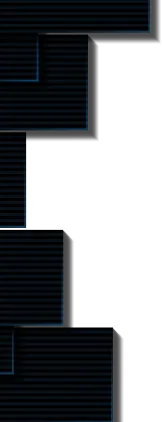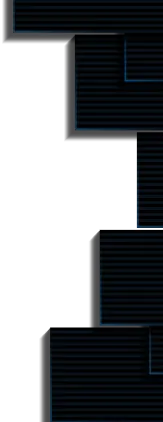What is Solana?
Parag

Solana, a cryptocurrency that debuted with minimal fanfare in April 2020, has been on a tear recently. Its price has risen from around $1.50 in January 2021 to more than $208 at the time of writing, giving it the world’s sixth-largest cryptocurrency with a market worth $61 billion.
Despite the market’s gloomy trend, one cryptocurrency that shone out is Solana. Solana (SOL) achieved a new all-time high of moreover $200 at a time when the other major cryptocurrencies were experiencing significant losses. Many traders, investors, market players, and others outside the Bitcoin industry were drawn in by this extraordinary price action.
As one of the world’s major cryptocurrencies, it’s no wonder that many people want to know more about Solana and why it grew in value during a time when other cryptocurrencies were losing value.
Interestingly amazing, right? Let’s know what exactly is Solana.
Solana is a decentralized blockchain designed to allow globally scalable, user-friendly apps. It is a crypto computing platform that strives for fast transaction speeds while maintaining decentralization. It makes use of a number of innovative techniques, including the “proof of history” mechanism.
SOL, Solana’s native coin, is used to pay transaction fees and for staking. It also allows holders to vote on future improvements.
Why is Solana better than other blockchains?
All the above information about Solana sounds quite similar to Ethereum, and Solana is best regarded as a sophisticated Ethereum rival as well. Why Solana when Ethereum has a lot more apps?
Here’s why; Ethereum has long been afflicted by exorbitant transaction fees, which may occasionally reach hundreds or even thousands of dollars, especially during periods of heavy network congestion. Solana has a higher potential throughput than Ethereum, which means it can handle more transactions per second, therefore the fees are now incredibly cheap, generally costing 0.000005 SOL, or about $0.001. Solana’s developers believe that high speeds and cheap prices would ultimately allow it to compete with centralized payment processors like Visa. It is one of the new crypto solutions aimed at making crypto networks quicker and more scalable.
Practically, once you have a wallet that can hold SOL and Solana-based tokens like Phantom or Sollet, you can interact with the many apps available. You may exchange one token for another on a decentralized exchange like Raydium, or you can purchase an NFT from the Solanart store. Whatever you do on Solana, you’ll pay the tiny fee indicated above, which appears to be rather reasonable when compared to Ethereum.
Who created Solana?
Anatoly Yakovenko established the Solana (SOL) platform in 2017. Before starting Solana, Yakovenko worked at Qualcomm. He has extensive familiarity with compression techniques as a result of his former work as a software developer at Dropbox. Together with Eric Williams and Solana’s CTO, Greg Fitzgerald, they developed a novel method for dealing with conventional throughput issues in the Bitcoin and Ethereum blockchains. They intended to develop a trustless, distributed protocol that would enable greater scalability. The team is presently supported by prominent businesses throughout the world, including Apple, Qualcomm, Intel, Google, Microsoft, Twitter, Dropbox, and others. Many investors, including Multicoin Capital, Foundation Capital, SLOW Capital, CMCC Global, Abstract Ventures, and others, have taken notice of Solana’s effect.
How does Solana work?
Solana (SOL) is without a doubt one of the best-performing cryptocurrencies this year. SOL has pushed its way into the top 10 cryptocurrencies by market capitalization, bypassing Dogecoin and Polkadot and vying with XRP.
Theoretically speaking, the network includes 200 physically separate nodes and can handle a throughput of more than 50,000 TPS when operating with GPUs, making it one of the most performant permissionless blockchains in the world. The agreement in time is one of the most difficult issues with distributed systems. Solana employs the Proof of History technique. You may use Proof of History to produce historical records that verify an event occurred at a certain point in time. The method is a Verifiable Delay Function with a high frequency.
When a transaction or event is analyzed, it is assigned a unique hash and a count that can be publicly and efficiently confirmed. The count serves as a cryptographic time stamp, allowing us to determine when each transaction or event occurred. Every node also has a cryptographic clock, which maintains track of the network’s time and the order of events. This provides for increased throughput and efficiency inside the Solana network.
The Working:
- Input transactions to the Leader
- The leader will efficiently sequence and organize the messages so that they’ll be evaluated by other nodes.
- The leader then performs the transactions based on the current state, which is stored in RAM.
- The transactions and signature of the final state will then be published by the Leader to the Verifiers (replication nodes)
- Verifiers will then do the identical operations on their copies of the state and publish their signatures on the state once confirmation is received.
- The publicly released confirmations will then be used to cast votes for the consensus algorithm.
What is the Solana Cluster?
Solana software relies heavily on the Solana Cluster. A cluster is a group of computers that operate together. From the outside, they appear to be a single system. Each Solana cluster is a collection of individually owned computers that often collaborate (can also work against each other). The computers aid in the verification of the output of untrusted, user-submitted applications. Furthermore, we may utilize the cluster whenever a user wishes to keep an immutable record of events or the programmatic interpretation of events.
Some applications of the technique include tracking which computers performed significant work in keeping the cluster operating. Another possibility is to track the ownership of physical goods. One advantage of this is that as long as someone has a copy of the ledger, the output of its programs may always be replicated and is independent of the entity that issued it.
SOL Token:
The SOL coin serves as the native money in the Solana ecosystem. As a result, the token may be passed between nodes in the Solana cluster in exchange for running on-chain applications or verifying their results. SOL can also be used to make micropayments known as “Lamports”. SOL currently has a circulating supply of 26 million. The maximal SOL supply is 489 million SOL. SOL has more applications, and you may stake the token to receive further benefits. Staking is a wonderful technique for users to gain money if they only want to keep their tokens.
Resources
https://en.wikipedia.org/wiki/Solana_(blockchain_platform)
https://solana.com/





Subscribe to receive Alpha!
Join 4.3k subscribers from renowned companies worldwide and get a weekly update in your inbox. Stay updated on the latest and finest projects and product updates.

